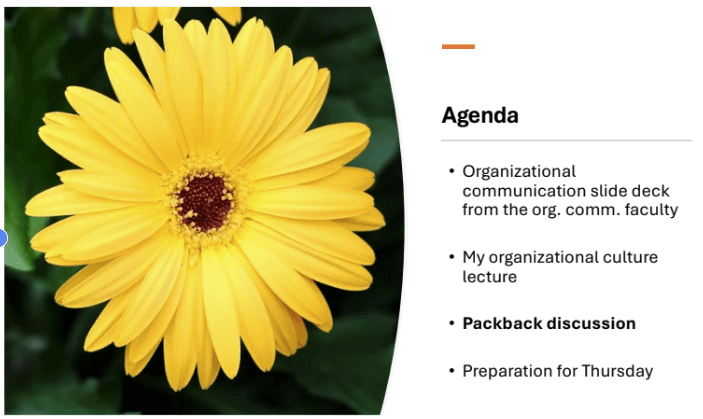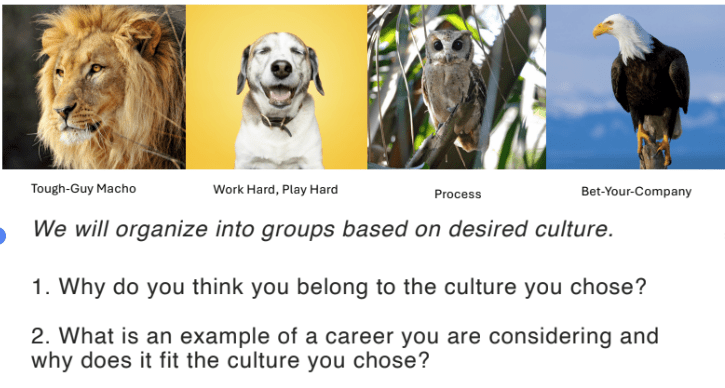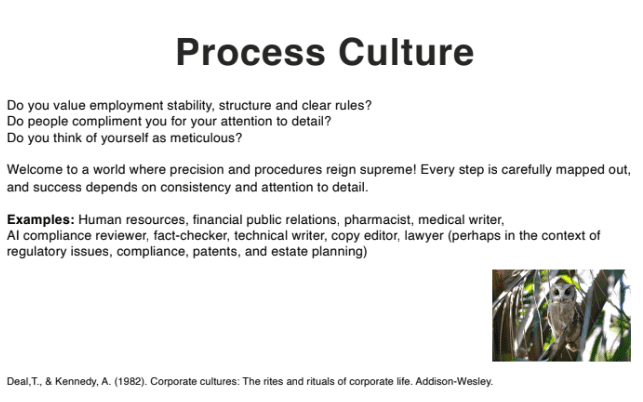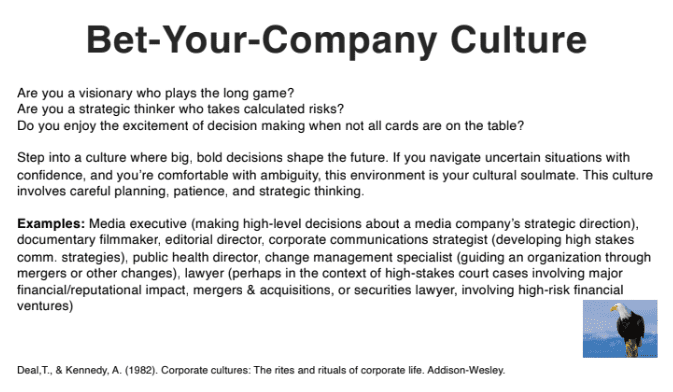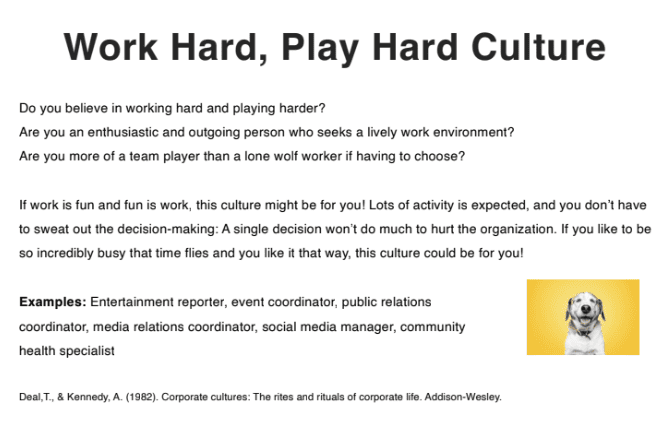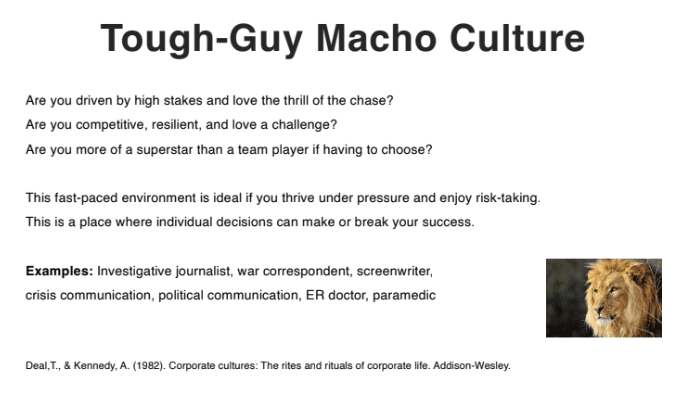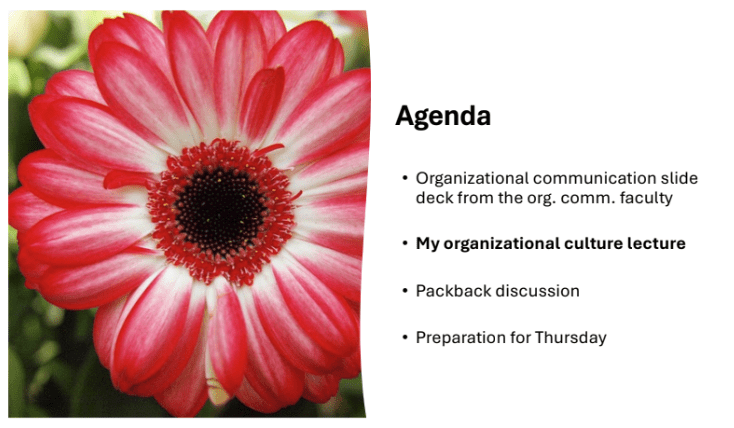From Cubicles to Cupid: How AI Created a Work Culture Connection

From Cubicles to Cupid: How AI Created a Work Culture Connection
Tiffany Gallicano
I was assigned to a new prep in fall 2024, which covered territory outside of my specialization in public relations.
I wanted to create a high-concept presentation that would engage my students in an area of the assigned reading, which was written in the third person. I asked ChatGPT to create online dating ads to help students find which of four workplace cultures matched their personality best, and I only included the four names of the workplace culture types when inputting the academic content to respect the authors’ original work.
ChatGPT shared meaningful, engaging content for my slides. Here is the content from the Bet-Your-Company Culture type:
“Are you a visionary who plays the long game?
Are you a strategic thinker who takes calculated risks?
Do you enjoy the excitement of decision making when not all cards are on the table?
Step into a culture where big, bold decisions shape the future. If you navigate uncertain situations with confidence, and you’re comfortable with ambiguity, this environment is your cultural soulmate. This culture involves careful planning, patience, and strategic thinking.”
I also asked ChatGPT to give me examples of careers in each of the communication studies concentrations, which I also included on each slide (See slideshow).
The resulting content was considerably more engaging than the assigned reading.
The lecture content tied in well with my class. One of my course objectives is to “complete an academic plan based on career opportunities within communication studies,” and one purpose of my class is to help students choose their concentration in the communication studies major or the general track by the end of the semester. The AI-based lecture content brought the textbook material to life and helped students understand a portion of the required reading, which represented one of the communication concentrations.
When I presented the content, I disclosed my use of AI for the slides and played up the matchmaking angle when presenting the slides and engaging in class discussion. I believe AI use should be disclosed, and I also like to model how AI can be used responsibly in various ways. In fact, this lecture enrichment is one of the many ways I use AI throughout the course. When I taught my students argumentation, I asked ChatGPT to generate an argument with fallacies to justify not paying interns. Students were asked to identify the fallacies and develop a refutation. My students also found value in using generative AI to draft headlines and identify contemporary issues in a concentration area for a blog post assignment requiring the use of peer-reviewed journal articles. I also use it for areas such as generating multiple choice questions and figuring out case study examples to respond to students’ Packback questions through concrete examples.
Following the workplace culture presentation, I organized students into groups based on the culture they were considering and included a group for students who were unsure. I then asked each student in the “unsure” group targeted questions to sort them into a preferred workplace culture. Then, we engaged in group discussion about workplace culture, and I offered guidance to students based on their workplace type, such as the importance of maintaining boundaries for students drawn to work hard, play hard cultures. Based on eye contact, student questions, and other signs of engagement, this approach was effective for students and enjoyable for me as their teacher.
